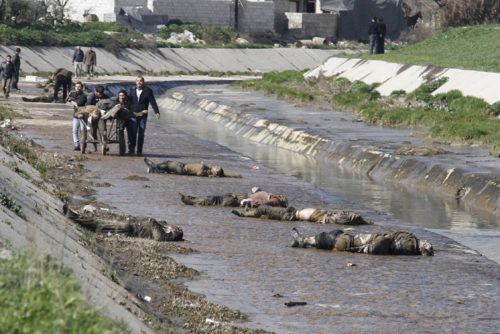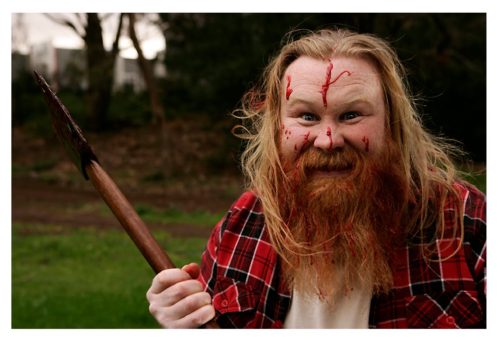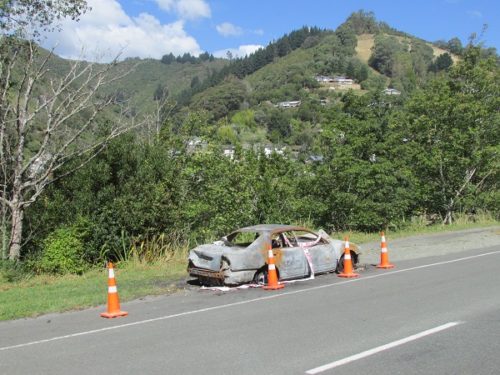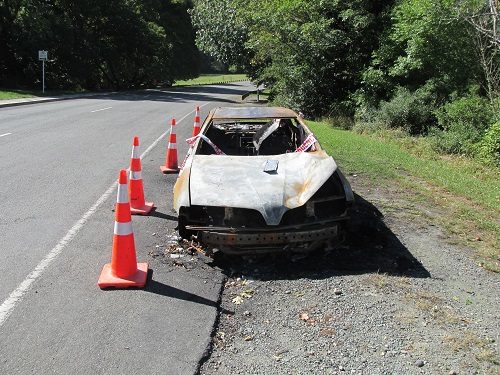
A couple of dozen supporters of the governing conservative party are shot dead by automatic rifle fire after coming out of a conference, and the gunman is soon shot dead by Police. On his YouTube account the media discover a video of the gunman talking about how his actions were inspired by the philosophy of anarcho-homicidalism. This essay examines the considerations that the anarcho-homicidalist will have needed to have made.
The purpose of undertaking a campaign of anarcho-homicidalism is to effect social change by increasing the adverse consequences of trying to enslave people.
One reason why slavery has been so common in human history is that there are very few downsides to it, as long as you are not the slave. All that’s really necessary is the ability and will to make a credible threat to the physical coherence of another person’s body, and it becomes possible to extort them out of their productivity.
In other primates, this credible threat is based around claws and fangs and is usually made to extort other primates out of food they have gathered or hunted. This is also the long-forgotten origin of slavery in the human animal.
The first ever anarcho-homicidalist action was probably undertaken by a young adult male primate, who had food resources constantly extorted from him through the threat of violence. As he grew from a juvenile into an adult, this male may have developed a physical strength greater than that of his tormentor, and then eventually killed that other ape to protect his own food supply.
When metallurgy became possible, it also became possible to place on other people chains of iron (they were literally chains of copper at first). This represented a considerable advance in the technology of slavery because metal allowed the enslaver to create physical bonds that could not be easily broken.
This meant that it was possible to bind a person to a particular place. Metal also made it possible to enslave people through the threat of stabbing them.
In the 21st century, slavery is primarily a question of chains of silver. These are not physical chains but mental ones. People are bound by their desires, and especially by their fears. They are also bound by confusion and deceit.
The way politicians enslave people with chains of silver is with laws and statutes. The trick with chains of silver is to get the slaves to put them on each other, backed up by the ultimate threat of a sharp and pointy bit of iron.
This method of enslavement reached its apogee in Communist East Germany. At one time it was estimated that 20% of the population were Stasi informants. In such an environment, ordinary people are regularly too terrified to do anything original or creative, and so the ruling classes are free to plunder the place without consequence.
Chains of silver are the basis of the question that has to be asked by modern people who want to be free. In particular, a person has to ask themselves, “At what point does Government overreach become slavery?”
Because once that point is exceeded, the anarcho-homicidalist will consider themselves duty-bound to take action; action predicated on the moral tenet that everyone has the right to kill anyone trying to enslave them.
The consequences of an act such as the one described in the opening paragraph of this essay might be taken if the National Government enforced a law that the anarcho-homicidalist considered to be slavery.
It doesn’t matter what this law might be specifically, because every individual has to decide for themselves at what point the actions of another become an attempt to enslave.
The idea is that, after anarcho-homicidalist action had been taken, the authority figure making the enslavement attempt might think again.
If the previous authority in their position had met a grisly end – such as the conservative party supporters gunned down in the opening paragraph – their replacement might well be conscious that the people they were trying to rule had set limits on that authority.
For this reason it would be necessary for an anarcho-homicidalist to make clear, to whoever was responsible to clean up the mess, why the mess was made.
For example, let’s say that an individual is facing criminal charges for collecting rain water on their own property. After a lengthy court struggle, that individual is put into so much debt that they end up losing the property, and consequently they decide to undertake an anarcho-homicidalist action by killing some of the council members responsible for making it illegal.
It would be essential to, at some point, make it clear to a likely-to-be shocked general public why this action was undertaken.
If the anarcho-homicidalist is shot dead by Police during their action – which is very possible – then it would be necessary to record a message beforehand. This could be a YouTube video explaining the reasons for the action, or a written message.
The important thing is that the anarcho-homicidalist makes clear that their actions are not simple acts of terrorism. Anarcho-homicidalist actions can only, by definition, be taken in self-defence. Therefore, any anarcho-homicidalist taking ultimate action is obligated to explicate their reasons for taking ultimate action, and to explain why their target was an enslaver and not an innocent.




